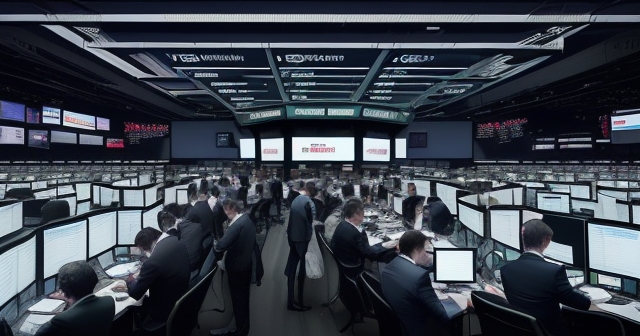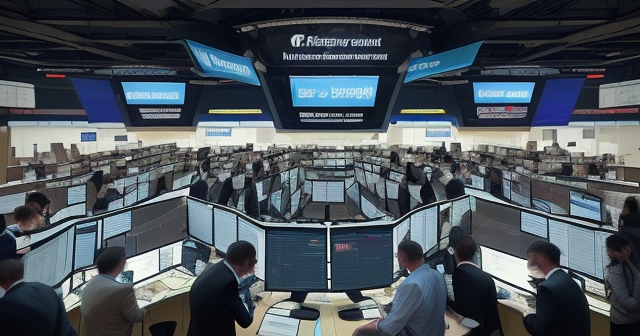Understanding Tier 1 Liquidity: The Backbone of Forex & Crypto Markets
Have you ever wondered how millions of trades happen seamlessly every day in the vast world of Forex and cryptocurrency markets? How can you instantly buy or sell a currency pair or a digital asset without waiting for a counterparty? The answer lies fundamentally in something called liquidity. Without ample liquidity, these dynamic markets would grind to a halt, making profitable trading incredibly challenging.
Liquidity is, quite simply, the ease with which an asset can be converted into cash or another asset without affecting its market price. Imagine trying to sell a rare painting versus selling a widely traded stock. The stock is far more liquid because there are always buyers and sellers ready to trade at the current market price. In financial markets like Forex and Crypto, high liquidity means that there is significant trading volume and many participants willing to buy and sell, allowing orders to be executed quickly and with minimal price disruption. This is absolutely critical for traders like us who rely on swift execution and tight spreads.
Think of the market as a bustling marketplace. Liquidity is the number of vendors and buyers present and ready to do business at any given moment. The more participants there are, the easier it is to find someone willing to trade at a fair price, reducing the cost of the transaction (the spread) and the chance of your order being filled at a significantly different price than expected (slippage).

Liquidity is a critical factor in trading success for several reasons:
- High liquidity facilitates quick execution of trades.
- Significantly reduces the chance of slippage.
- Enhances overall market efficiency.
The Decentralized Universe: Forex Market Microstructure
Unlike stock markets, which are often centralized exchanges with a single official price, the Forex market is largely an Over-the-Counter (OTC) network. This means there isn’t one central exchange setting the price for, say, EUR/USD. Instead, prices emerge from a vast, interconnected web of banks, financial institutions, corporations, hedge funds, brokers, and individual traders.
This decentralized nature is both a strength and a complexity. Prices can differ slightly between participants, and the ‘best’ price available at any moment depends on which entities are quoting prices and how you are connected to them. This is where the concept of Liquidity Providers (LPs) becomes paramount. LPs are the entities that actively quote both a buy price (bid) and a sell price (ask) for a financial asset, essentially creating a market for it. They stand ready to buy when you want to sell, and sell when you want to buy, absorbing the other side of your trade.
In the OTC Forex market, LPs are the engines that keep the wheels turning. They provide the necessary depth and volume that allows transactions to occur efficiently at scale. Without them, finding a counterparty for your trade would be difficult and time-consuming, increasing costs and uncertainty.

Who Sits at the Top? Defining Tier 1 Liquidity Providers
In the hierarchy of financial markets, especially Forex, Tier 1 Liquidity Providers occupy the highest echelon. These are typically the largest, most reputable, and financially stable banks in the world. We’re talking about global banking giants like JP Morgan, Citibank, Deutsche Bank, UBS, Barclays Capital, Bank of America, BNP Paribas, and others. These institutions trade massive volumes daily, not just for their clients but also for their own proprietary desks.
Why are they considered “Tier 1”? Because they have the capacity, technology, and credit lines to handle extremely large institutional orders and provide deep liquidity directly to each other and other major market participants. They are the primary sources of pricing and liquidity in the interbank market, which is the core of the global Forex network. Their bid-ask quotes form the foundation upon which prices are built throughout the system.
Accessing liquidity directly from a Tier 1 provider is the gold standard, but it comes with significant barriers. These institutions typically require:
- Very high minimum capital requirements (often tens or hundreds of millions of dollars).
- Extremely strict regulatory compliance and extensive due diligence.
- Advanced technological infrastructure capable of connecting directly via APIs (like FIX API).
- Established credit lines and prime brokerage relationships.

For most market participants, including smaller institutional players, hedge funds, prop trading firms, and certainly retail brokers, direct access to these Tier 1 giants is simply not feasible due to the prohibitive costs and requirements.
Bridging the Access Gap: The Role of Prime of Prime (PoP) Providers
Given the challenges of connecting directly to Tier 1 banks, how do smaller brokers and institutions access the deep, high-quality liquidity needed to service their clients and execute their own strategies? This is where Prime of Prime (PoP) Providers step in. PoPs act as crucial intermediaries in the market structure.
A PoP provider essentially establishes relationships with multiple Tier 1 and other major liquidity sources (like large non-bank LPs, ECNs, and exchanges). They aggregate the liquidity feeds from these diverse sources into a single, comprehensive pool. This aggregated feed offers significantly greater depth and potentially tighter spreads than a single source could provide.
Prime of Prime providers then offer access to this aggregated liquidity pool to their clients, which are typically:
- Retail Forex and CFD brokers
- Smaller institutional trading firms
- Hedge funds and asset managers below the threshold for direct Tier 1 access
- Proprietary trading desks
By connecting to a PoP, these entities gain access to deep, multi-source liquidity without needing to meet the stringent capital, regulatory, and technological requirements imposed by the Tier 1 banks. The PoP handles the complex relationships, the technology integration with multiple feeds, and often provides risk management tools and white-label solutions.

Consider the PoP as a sophisticated wholesaler of liquidity. They buy in bulk from the primary producers (Tier 1 banks) and package it in a way that makes it accessible and affordable for smaller businesses to buy from them. This structure is vital for the efficient functioning of the broader Forex and CFD markets, enabling smaller players to compete effectively and offer competitive conditions to their own clients.
The Engine Room: Core Functions of Liquidity Providers
Regardless of whether they are Tier 1 banks or PoP aggregators, all Liquidity Providers perform essential functions that are critical for market operations. Let’s explore these roles:
1. Market Making: This is the primary function. LPs constantly quote both a bid (buy) and an ask (sell) price for the assets they cover. By standing ready to buy or sell at any time, they create a continuous market, allowing other participants to enter or exit positions. The difference between their bid and ask price is the spread, which is a key component of their revenue.
2. Price Aggregation: PoP providers, in particular, excel at this. They connect to multiple liquidity sources and aggregate the best available bid and ask prices from across those sources into a single feed. This provides a more complete picture of the market depth and helps secure the most competitive pricing for their clients.
3. Risk Management: Holding positions as a market maker exposes LPs to market risk. If they buy when prices fall or sell when prices rise, they can incur losses. LPs employ sophisticated risk management techniques and technology to hedge their positions, manage their overall exposure, and maintain stability, even during volatile market conditions.
| Key Functions | Description |
|---|---|
| Market Making | LPs quote both bid and ask prices, allowing continuous market access. |
| Price Aggregation | LPs aggregate prices from various sources to provide competitive quotes. |
| Risk Management | LPs employ techniques to manage market risks and maintain stability. |
4. Technology & Infrastructure: Providing liquidity requires incredibly robust, low-latency technology. LPs invest heavily in high-speed servers, co-location facilities, and advanced trading platforms or APIs (like FIX API) to ensure orders are received, processed, and executed in milliseconds. Reliability and uptime are paramount.
5. Handling Order Flow: LPs are responsible for receiving and processing the vast flow of orders from their clients. This includes managing different order types (market orders, limit orders, stop orders), executing trades, and confirming fills quickly and accurately. Efficient order handling minimizes slippage, especially for large orders.
By performing these functions, LPs ensure that there is always a counterparty available to take the other side of a trade, prices are constantly updated, and transactions can be processed rapidly, maintaining market depth and stability.
How LPs Influence Price Action and Market Dynamics
It’s important to understand that LPs aren’t just passive participants; their actions directly influence price action and market dynamics. As the entities setting the bid and ask prices and managing order flow, their behavior can shape how prices move, especially in periods of volatility or low liquidity.
Spreads: As we mentioned, the spread is set by the LP. In normal, liquid market conditions, spreads are typically tight. However, when volatility increases (e.g., during major news announcements like FOMC decisions) or liquidity decreases (e.g., late at night or on weekends), LPs widen their spreads significantly. They do this to compensate for the increased risk of taking on positions when prices are moving rapidly or counterparty availability is low. Understanding when and why spreads widen is crucial for traders.
Order Flow Management: When large orders hit the market, LPs need to absorb them and potentially hedge their resulting exposure. This process can cause momentary price pushes. For example, if a large institution sells a significant amount of a currency pair, the LP taking the other side might need to find buyers or hedge by selling elsewhere, adding downward pressure to the price.
Stop Hunting: This is a controversial but well-documented phenomenon where LPs (or other large market participants aware of clustered retail stop-loss orders) might intentionally push the price towards known levels where many stop orders are placed. Triggering these stops creates a burst of volume (forced market orders), which provides liquidity for the larger players to fill their own positions at favorable prices. While not malicious manipulation in the traditional sense, it’s a byproduct of large participants having visibility into or making educated guesses about where retail stops are likely placed.
Liquidity Gaps: These occur when there is a sudden, sharp move in price with little to no trading volume in between the old price and the new price. This often happens over weekends, during major news events, or when markets reopen after holidays. LPs, facing uncertainty and a lack of counterparties, will significantly widen their spreads or temporarily withdraw quotes. When trading resumes, prices can jump (gap) to where the first available bids and asks from LPs are, causing significant slippage for orders placed within the gap.

By understanding these aspects of LP behavior, traders can better anticipate market reactions, manage their risk (especially regarding stop-loss placement and potential slippage), and gain insight into the underlying mechanics driving price movements. It’s not just about charts; it’s about understanding the forces of supply and demand managed by these key entities.
Choosing Your Partner: Key Criteria for Selecting a Liquidity Provider
For a broker, trading firm, or institution, selecting the right Liquidity Provider is one of the most critical strategic decisions they will make. The choice directly impacts their ability to offer competitive pricing, execute trades efficiently, manage risk, and ultimately, succeed. If you are evaluating a broker, their LP relationships are a key factor in their quality.
Here are the key criteria used to evaluate and select a Tier 1 or Prime of Prime Liquidity Provider:
1. Market Coverage and Asset Diversity: Does the LP offer deep liquidity across all the asset classes the client needs to trade? This includes major, minor, and exotic FX pairs, popular and emerging cryptocurrencies (like Bitcoin, Ethereum), indices, commodities (Gold, Oil), metals, and CFDs on stocks or ETFs. A broad offering allows the client to consolidate their liquidity needs with a single provider.
2. Depth of Liquidity: Can the LP handle large order sizes without causing significant price impact or slippage? Deep liquidity means there are substantial volumes available at each price level, ensuring that even large institutional trades are executed efficiently close to the desired price. This is a major differentiator between good and poor LPs.
3. Pricing & Spreads: This is often the most visible criterion. How tight are the typical spreads offered across different asset classes and market conditions? Is the pricing transparent? While ultra-tight spreads are attractive, consistency and reliability are also crucial. Variable pricing models (e.g., volume-tiered) should also be considered.
| Criteria | Importance |
|---|---|
| Market Coverage | Essential for fulfilling diverse trading needs. |
| Depth of Liquidity | Crucial for efficient trade execution without disruption. |
| Pricing & Spreads | Directly affects trading costs and competitiveness. |
4. Technology & Infrastructure: What is the quality of their trading technology? This includes:
- Execution Speed: How quickly are orders processed and filled (low latency)?
- API Connectivity: Do they offer reliable, well-documented APIs (like FIX API or REST API) for seamless integration?
- Platform Support: Are they compatible with popular trading platforms like MT4, MT5, or cTrader?
- Uptime and Reliability: How often is their service available? Downtime means lost trading opportunities.
- Risk Management Tools: Do they provide tools to help the client manage their exposure?
Robust technology is the foundation of efficient liquidity provision and trade execution.
Regulation, Reputation, and Trust: Non-Negotiable Factors
Continuing our discussion on selecting a Liquidity Provider, several less tangible but equally important factors come into play, primarily related to trust and operational integrity.
5. Regulation and Compliance: Is the LP regulated by reputable financial authorities (e.g., FCA, CySEC, ASIC, FINMA)? Working with a regulated entity is non-negotiable. Regulation ensures the LP adheres to strict financial standards, has proper risk controls in place, and operates transparently. This protects the client and, by extension, the client’s clients from potential fraud or instability.
6. Reputation and Track Record: What is the LP’s history in the market? Do they have a reputation for reliability, fair pricing, and good customer service? Client testimonials, industry awards, and public perception can provide valuable insights into their trustworthiness and experience.
7. Customization and Flexibility: Can the LP tailor their offering to the specific needs of the client? This might include customized feeds, specific asset lists, flexible credit lines, or tailored risk management solutions. Scalability is also important – can they handle increased volume as the client’s business grows?
8. Cost Structure: What are the total costs involved beyond just the spread? This includes commissions, connectivity fees, minimum volume requirements, and any other potential charges. A clear, transparent fee structure is essential for predicting costs and managing profitability.
Choosing an LP isn’t just about finding the lowest price; it’s about finding a reliable, trustworthy partner with the technology and regulatory standing to support a trading business effectively. It’s a partnership that forms the backbone of operations.
Technology Underpinning Liquidity: Speed and Connectivity
We’ve touched upon technology, but it’s worth a deeper dive because it is fundamentally what enables modern, high-speed trading and liquidity provision. The ability to process millions of price updates and order requests per second is not trivial. Liquidity Providers operate sophisticated technological stacks.
At the core are high-performance matching engines, aggregation software, and risk management systems. These systems are often hosted in data centers geographically close to major financial hubs (like London or New York) to minimize network latency – the tiny delay in transmitting data. This is known as co-location, and it’s essential for high-frequency trading (HFT) firms and LPs who rely on speed to gain an edge.
Connectivity is typically managed through dedicated lines or highly optimized internet connections. For institutional clients and brokers, the primary method of connecting to an LP’s pricing and execution engine is via an API (Application Programming Interface), most commonly the FIX (Financial Information eXchange) protocol. FIX API is the global standard for electronic trading communication, designed for speed, reliability, and handling complex order types and data feeds.
PoP providers often offer connectivity options beyond just FIX API, catering to clients using specific trading platforms. This might include gateways for MetaTrader 4 (MT4), MetaTrader 5 (MT5), cTrader, or proprietary platforms. They also often provide sophisticated bridge solutions to connect these popular retail platforms seamlessly to their aggregated institutional liquidity.
Furthermore, modern LPs provide sophisticated reporting and back-office systems, offering detailed insights into execution quality, order flow analysis, and risk exposure. This technological infrastructure is not just about speed; it’s about providing the tools necessary for clients to monitor their activity and manage their business effectively.

The constant evolution of trading technology, including the increasing use of cloud computing and machine learning for risk management, continues to shape how liquidity is provided and consumed in the global markets.
Tier 1 and PoP Providers in the Crypto Space
While the concepts of liquidity and LPs originated in traditional finance like Forex, they are equally, if not more, critical in the nascent and often more volatile cryptocurrency markets. The crypto space is even more fragmented than Forex, with numerous exchanges and OTC desks.
Initially, crypto liquidity was concentrated on a few large exchanges. However, as institutional interest grew, the need for over-the-counter trading and access to deep liquidity pools that don’t rely on a single exchange became apparent. This is where specialized crypto liquidity providers emerged, and the concepts of ‘Tier 1’ (referring to major crypto institutions and large exchanges with significant volume) and Prime of Prime models have been adapted.
A crypto PoP provider aggregates liquidity from various sources, including major crypto exchanges (like Binance, Coinbase, Kraken), large OTC desks, and other market makers. They provide a single point of access for brokers and institutions who want to offer cryptocurrency trading but don’t want to integrate with dozens of individual exchanges.
The challenges in crypto liquidity provision include:
- Higher volatility compared to Forex, requiring more dynamic risk management.
- The fragmentation of exchanges and the need to connect to many different APIs.
- Regulatory uncertainty in some jurisdictions.
- Custody and security of the underlying digital assets.
Despite these challenges, the demand for reliable crypto liquidity is soaring. Companies specializing in this area are developing sophisticated aggregation engines and risk management solutions tailored for digital assets, bringing a layer of professionalism and infrastructure previously seen only in traditional FX markets.
Understanding the liquidity landscape is just as vital for crypto traders and businesses as it is for Forex participants. It impacts spreads, execution reliability, and overall trading costs.
Spotlight: Examples of Leading Liquidity Providers and PoP Services
The market for liquidity provision is competitive, featuring a mix of traditional banks, specialized firms, and technology providers. While direct Tier 1 banks are the ultimate source, many firms offer access to aggregated Tier 1 or institutional-grade liquidity through a PoP model or dedicated institutional services.
Some prominent examples in the market include (note: this is not exhaustive and the landscape evolves):
- Major Banks (Tier 1 Sources): As mentioned, banks like Deutsche Bank, UBS, Barclays, JP Morgan, Citibank remain primary liquidity sources in the interbank FX market.
- Prime of Prime/Institutional Providers: Firms specializing in aggregating liquidity and providing it to brokers and institutions. Examples often cited include B2Broker, Swissquote Bank, Finalto (formerly Playtech Financials), Advanced Markets, Match-Prime, FXCM Pro, Leverate, X Open Hub, Fortex, IXO Prime, LMAX. Many of these also offer related technology and white-label solutions.
- ECNs (Electronic Communication Networks): Platforms like Currenex, EBS, Fxall, KCG Hotspot aggregate prices from various participants and provide execution venues. While not strictly LPs themselves, they are crucial platforms where LPs provide liquidity.
These firms differentiate themselves based on the criteria we discussed: the depth and breadth of their liquidity pool (how many Tier 1 and other sources they aggregate), the competitiveness of their pricing, the robustness and speed of their technology, their regulatory status, and the quality of their support and related services.
For brokerages or institutions, selecting from this pool requires careful due diligence based on their specific business model, target markets, required asset classes, and trading volume. The partnership with an LP is long-term and fundamental to their operation.
If you are an individual trader exploring different platforms, the quality of the broker’s execution and pricing is a direct reflection of their own liquidity arrangements. Brokers partnering with top-tier PoP or institutional providers are generally better equipped to offer tighter spreads and faster execution than those relying on less robust sources.
Strategic Implications: Why Understanding LPs Matters for Traders
Even if you are a retail trader simply using a broker’s platform, understanding the world of Liquidity Providers and how they operate offers significant strategic advantages. It’s not just abstract market structure; it directly impacts your daily trading experience.
Knowing that spreads widen during news events because LPs manage risk helps you anticipate higher trading costs and potential slippage at those times. This can influence your decision to trade or stand aside during such periods.
Understanding how order flow and large institutional trades influence price action, managed by LPs, gives you a more sophisticated view than just looking at chart patterns in isolation. It adds a layer of market depth understanding.
Awareness of concepts like stop hunting helps you consider strategic placement of your stop-loss orders, perhaps avoiding obvious levels where many retail stops are likely clustered.
Recognizing the potential for liquidity gaps (e.g., over weekends) prepares you for sudden price movements and potential significant slippage on pending orders or stop losses placed in the affected zone.
Furthermore, when you evaluate a brokerage platform, understanding the importance of their liquidity source allows you to ask relevant questions about their execution model (STP, ECN access, etc.) and who their liquidity providers are. This due diligence can help you choose a broker that offers reliable execution and competitive pricing.
For those considering getting into Forex or CFD trading, or looking for a new platform, assessing the underlying infrastructure, including liquidity provision, is paramount. If you’re considering starting Forex trading or exploring more CFD instruments, Moneta Markets is a platform worth considering. Originating from Australia, it offers over 1000 financial instruments suitable for both novice and professional traders.
Mastering technical analysis and trading strategies is vital, but coupling that with a solid understanding of the market microstructure, including the critical role of LPs, provides a more complete and robust foundation for successful trading.
Conclusion: The Unseen Pillars of Market Efficiency
In wrapping up our exploration, it’s clear that Liquidity Providers, particularly the foundational Tier 1 Liquidity Providers and the vital intermediary Prime of Prime Providers, are the unseen pillars that support the efficiency, stability, and dynamism of the Forex and increasingly, the cryptocurrency markets. They ensure that buy and sell orders can be executed swiftly and with minimal disruption, providing the depth and volume necessary for vibrant trading.
We’ve delved into the decentralized nature of Forex, the dominance of major banks at the Tier 1 level, and how PoP providers democratize access to this top-tier liquidity for a wider range of market participants. We’ve also examined the core functions of LPs – market making, aggregation, risk management, and leveraging cutting-edge technology – and how their activities directly impact the prices we see and the quality of execution we experience as traders.
Understanding the critical factors involved in selecting a liquidity partner – from market coverage and depth to technology, regulation, and cost – highlights the strategic importance of this relationship for any entity operating in the trading space. For you, the trader, gaining insight into how LPs operate empowers you to make more informed decisions, manage risk more effectively, and potentially gain a deeper understanding of the forces shaping market movements.
Choosing the right trading platform is also a key decision. When selecting a trading platform, the flexibility and technological advantages of Moneta Markets are worth noting. It supports mainstream platforms like MT4, MT5, and Pro Trader, combined with high-speed execution and low spread settings, providing a good trading experience.
Ultimately, liquidity is the lifeblood of financial markets, and LPs are the circulatory system. By appreciating their role and impact, we can navigate these complex environments with greater knowledge and confidence, moving closer to mastering the art and science of trading.
tier 1 liquidity providersFAQ
Q:What are Tier 1 Liquidity Providers?
A:Tier 1 Liquidity Providers are large, reputable banks that provide deep liquidity and set the pricing in the Forex market.
Q:How do Prime of Prime Providers help smaller brokers?
A:They aggregate liquidity from multiple Tier 1 banks, allowing smaller brokers to access high-quality liquidity without direct connection complications.
Q:Why is liquidity important in trading?
A:High liquidity ensures fast trade execution, reduces slippage, and improves overall market efficiency, essential for profitable trading.

留言